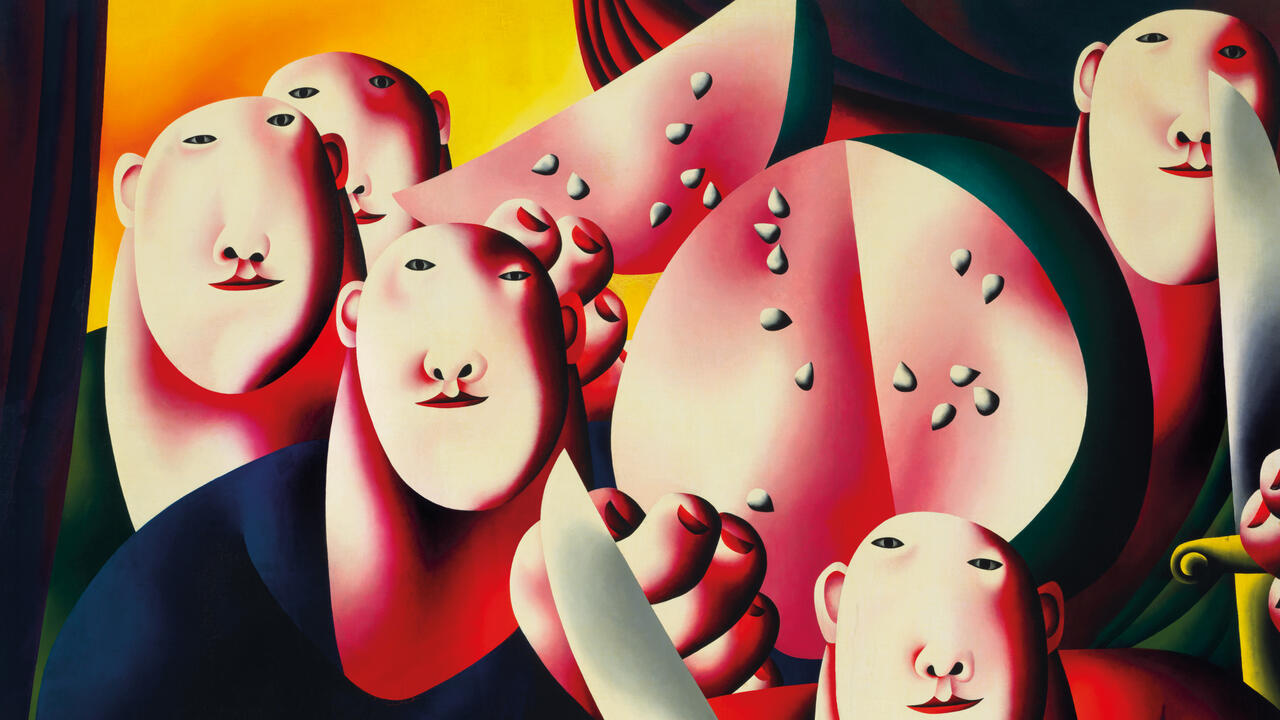7th Moscow Biennale
New Tretyakov Gallery, Moscow, Russia
New Tretyakov Gallery, Moscow, Russia

In her enigmatic proposal for the 7th Moscow Biennale, ‘Clouds ⇄ Forests’, curator Yuko Hasegawa declares that art can open a dialogue between the young inhabitants of the ‘Cloud’ and the more traditional ‘Forest’ generation, bridging the gap between the real and the virtual, the old and the new, the material and the digital. The creative ‘tribe’ of artists and makers, she continues, can break us from such domineering and dysfunctional dualisms and establish a futuristic communion of nature, human and machine. There is a touch of naive sentimentalism to Hasegawa’s proposal, something made explicit by the biennale’s audio guide: ‘Art’, it reads, ‘has got to save the world’.
If anything, art should attempt to save the world from humanity itself – from the destructive consequences of civilization’s anthropocentric vision. Accordingly, a number of artists in this year’s biennale seek to overhaul our failed relationship with nature. Marie-Luce Nadal’s The Factory of the Vaporous (2014/2017) extracts vapour from the smog-filled atmosphere cloaking the New Tretyakov Gallery (host to this year’s biennale) and transforms it into manmade clouds housed in glass wall-mounted cases. Vapour being far from the world’s most stable or predictable material, Nadal’s chambers are constantly in flux, the water molecules floating in accordance to fate and atmospheric conditions that the artist cannot predict, let alone control.

Elsewhere, Alexandra Daisy Ginsberg’s Designing for the Sixth Extinction (2013-15) explores genetic engineering as a means towards a new biodiversity. Large-scale digital images depict greenery of the future, which is populated by unfamiliar life forms – manmade organisms that help to balance fragile ecosystems and combat mass extinction via invasive engineering.
Revital Cohen and Tuur van Balen’s The Quiet (2015) is a dark antechamber with foam-lined walls, warm moist air and lush greenery, which recreates the feeling of suspension that precedes a storm. A heavy silence enthrals as one anticipates change, turmoil and possibly destruction: a state evocative of many of today’s geographies, whether environmental or political. In Russia, with the presidential election scheduled for March 2018, many expect a major storm, although few forecast change.
As one progresses through the biennale, attention shifts from the earthly landscape to the abstract cloud, where humans and replicants might merge as soon as 2049 – if we are to believe Ridley Scott. Co(AI)xistence (2017), Justine Emard’s collaborative film with the dancer Mirai Moriyama, sees the latter learning moves from a robot. With their bodies spotlit within an otherwise dark space, there is an unexpected sense of intimacy between the two figures, the angular motions of the machine softened by the tenderness of its human counterpart.

While the previous iteration of the Moscow Biennale placed emphasis on the physical gathering, ‘Clouds ⇄ Forests’ eschews performance altogether. In its place, visitors are granted 360-degree access to a VR rendering of the Icelandic musician Björk, who transforms from a woman to a mouth to a winged goddess with a vagina-shaped wound in the middle of her chest.
Returning from fantasy to the physical world, several installations seek to create an inhabitable space in which viewers can engage their senses. Nile Koetting’s Sustainable Hours (2016) is a modern ‘ecosystem’ of multiple gadgets, purified air, wind and scent. Serenely clinical and neat, this living room of a cyberpunk near-future offers the opportunity to hear punk lyrics read by a soothing female voice, as if they were lyrical poems (a cup of tea and sustainable Wi-Fi is provided). Sissel Tolaas’s Sputnik_60 Memory Game (2017) attempts to teach the history of space exploration through a series of evocative scents, each pertaining to a significant date. Which year do you think smells like mazut?
Hasegawa’s proposal finds its climax in Cécile B. Evans’s What the Heart Wants (2016). The head-spinning video assemblage is a non-linear musing on the role of feelings and emotions in a technology-dominated future, a speculative realm in which one can no longer distinguish between AI and human consciousness, let alone form.

Hasegawa’s proposal for ‘Clouds ⇄ Forests’ is intriguing, but alien; a curatorial vision somewhat removed from the issues on the ground. In a fast-paced Moscow, which has been catapulted into the 21st century while its political system languishes a century behind, AI is not a central concern. On a national scale, too, existential crises are triggered not by speculative futures, but by a lingering past and an unstable present. In a country too cold to fear global warming, too vast to imagine resource scarcity, and too preoccupied with an unresolved history to consider a distant future, Hasegawa’s choice of subject seems a little misplaced.
Main image: Alexandra Daisy Greenberg, Designing for the Sixth Extinction, 2013-5. Courtesy: New Tretyakov Gallery, Moscow
























